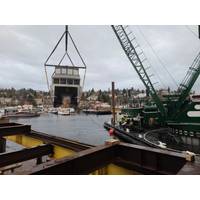
PNNL's New Research Vessel Launched
with both standard diesel engines and electric motors, will be the first hybrid vessel in the DOE fleet. The vessel will be powered by an advanced parallel hybrid-electric propulsion system, consisting of two Volvo Penta D8-510 main engines, capable of producing 374 kW each, supplemented by two Danfoss Editron EM-PMI375-T200-2600 motor-generators. Power is stored using a Spear Trident battery system, allowing the vessel to operate quietly in a zero-emission electric state while engaged in a mixture of survey operational modes.Resilience will be able to operate quietly on electric power at lower

Shipbuilding: Work Starts on 50-ft. Hybrid Research Vessel
vessel for the Department of Energy's Pacific Northwest National Laboratory.Dubbed RV Resilience, the boat is designed by Incat Crowther with propulsion integration provided by Pacific Power. Hybrid propulsion will be accomplished by joining twin Volvo Penta D8-510 (374kW) marine engines, and two Danfoss Editron 20kW motor-generators. Power is stored using a Spear Trident battery system. This combination allows the vessel to operate in a zero-emission “quiet” state, which is more effective for marine research and will also reduce air pollution and carbon dioxide emissions.The vessel

Danfoss to Power US' New Hybrid-electric Research Vessel
Danfoss Power Solutions’ Editron division has been chosen by the Pacific Power Group and Seattle shipbuilder Snow & Company to provide the drivetrain system powering the U.S. Department of Energy’s first hybrid-electric research vessel. Due to enter operation in February 2023, the vessel will be used by PNNL-Sequim.The Pacific Northwest National Laboratory (PNNL) is a research center specializing in research advancing sustainable energy through decarbonization and energy storage. The new research vessel will enable PNNL-Sequim to carry out the testing and research needed to support
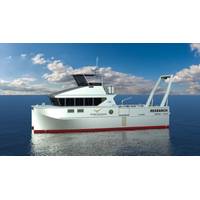
Snow & Company Building New Research Vessel for Pacific Northwest National Laboratory
catamaran research vessel for operation by the Pacific Northwest National Laboratory.The Incat Crowther designed vessel will be powered by an advanced parallel hybrid-electric propulsion system, consisting of two Volvo Penta D8-510 main engines, capable of producing 374 kW each, supplemented by two Danfoss Editron EM-PMI375-T200-2600 motor-generators. Power is stored using a state-of-the-art Spear Trident battery system, allowing the vessel to operate quietly in a zero-emission electric state while engaged in a mixture of survey operational modes.Incat Crowther said it has developed a bespoke design
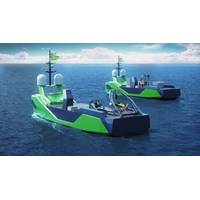
Autonomy: Inside the Building of Ocean Infinity’s Armada Fleet
at the Grovfjord Mek. Verksted (GMV) yard in Norway. But Hook says future vessels are likely to also be built elsewhere and the company is already in talks with yards in the US, where they would be Jones Act compliant. The vessels have a hybrid-electric propulsion system, with Volvo Penta DC gensets and Danfoss DC grid control system, with high battery capacity to enable more electric and even all-electric operations where possible. Hook says other cleaner fuel options could also be considered in the future, as options mature. Even with the hybrid system could save 90% emissions compared with a conventional
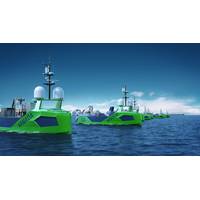
Powering the World's First Fleet of Robot Ships
The maritime and scientific community have set themselves the ambitious target to map the entire ocean floor by 2030. Volvo Penta and Danfoss Editron will play a role by powering a novel fleet of unmanned surface robots for subsea exploration.The companies have been commissioned for the unique venture by Grovfjord Mek. Verksted (GMV) shipyard, to power the world’s first fleet of autonomous robot exploration vessels for commercial use. The seafloor analysis and oceanography company Ocean Infinity has invested in the ‘Armada’ fleet of super-advanced unmanned vessels. The fleet will be

OSV Powers Up for Deepwater Efficiency the Island Offshore Way
MJRM LB8 (gen set)Engine controls Kongsberg RR BergenRadars FurunoDepth Sounders FurunoAuto Pilot Marine TechnologyRadios SailorAIS FurunoGPS FurunoGMDSS SailorSatCom MarlinkMooring equipment Konsgberg winchesFire extinguishing systems Danfoss SemcoFire detection system ConsiliumHeat exchangers Alfa Laval NordicLifeboats Harding Safety/Palfinger MarineLiferafts Viking Safety EquipmentCoatings Akzo NobelBWMS OptimarinClass DNV+1A1, Offshore Service Vessel+ AHTS, SPS, NAUTT-OSV (A), ICE 1A*, EO
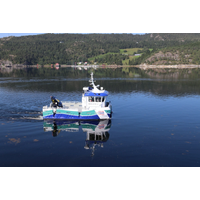
First Hybrid Fish Farm Boat On the Water
Danfoss Editron has delivered two 105kW motors that will help power Edel, the first hybrid vessel built for the aquaculture sector by Norwegian shipyard Moen Marin. Edel is also the first diesel-electric vessel in the fleet of NRS Farming, Norway’s leading producer of sustainable salmon.The 13.5 by 7.5m vessel will become part of NRS Farming’s fleet and be used for sustainable fishing in salmon farms located in Norway’s fjords. As it has an operating pattern of predominantly short trips, NRS Farming plans to run Edel mainly on battery power. However, the boat will operate in diesel-ele

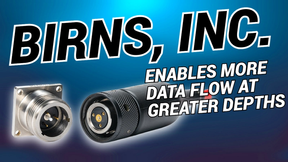
 February 2024
February 2024





